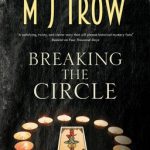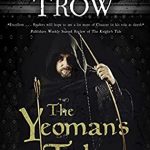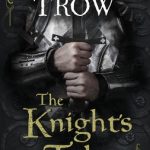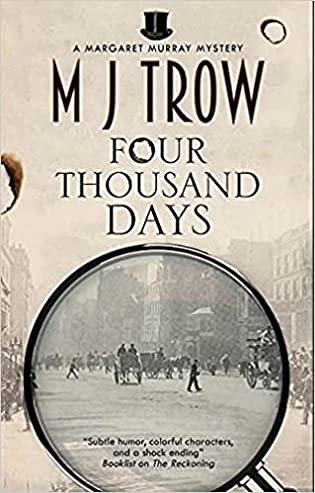 Four Thousand Days (Margaret Murray, #1) by M.J. Trow
Four Thousand Days (Margaret Murray, #1) by M.J. Trow Format: eARC
Source: supplied by publisher via NetGalley
Formats available: hardcover, ebook, audiobook
Genres: historical fiction, historical mystery
Series: Margaret Murray #1
Pages: 224
Published by Severn House Publishers on November 25, 2021
Purchasing Info: Author's Website, Publisher's Website, Amazon, Barnes & Noble, Kobo, Bookshop.org, Better World Books
Goodreads
Introducing turn-of-the-century archaeologist-sleuth Margaret Murray in the first of a brilliant new historical mystery series.
October, 1900. University College, London. When the spreadeagled body of one of her students is discovered in her rented room shortly after attending one of her lectures, Dr Margaret Murray is disinclined to accept the official verdict of suicide and determines to find out how and why the girl really died.
As an archaeologist, Dr Murray is used to examining ancient remains, but she's never before had to investigate the circumstances surrounding a newly-dead corpse. However, of one thing Margaret is certain: if you want to know how and why a person died, you need to understand how they lived. And it soon becomes clear that the dead girl had been keeping a number of secrets. As Margaret uncovers evidence that Helen Richardson had knowledge of a truly extraordinary archaeological find, the body of a second young woman is discovered on a windswept Kent beach - and the case takes a disturbing new twist ...
My Review:
This has been a week of mostly mysteries – or at least a week of conundrums of one sort or another. Margaret Murray’s first foray into amateur detection fits right in. But I was expecting it to considering how much I enjoyed one of the author’s previous mysteries, The Knight’s Tale.
The process of professional archaeologist and amateur detective Murray becoming involved in this case-that-is-almost-not-a-case is marvelously immersive and feels true to the character. It also does a lovely job of introducing the reader to this time and place, London in 1900 as the new century turns over and a new era is on the horizon.
It also places us squarely into the academic environment of University College – that Godless Institution – at a time when women academics were, shall we say, rather thin on the ground. Murray was (really) one of a kind. Her professional credentials are a bit haphazard, because women weren’t supposed to be what she was. But she’s doing her best – which is quite good – to encourage the women who follow in her wake.
And that’s where this story really kicks off, as one of Murray’s part-time students is a police constable called to the death of another. Constable Crawford is sure it’s murder, while the detective in charge calls it suicide – clearly because he doesn’t want to investigate the death of a prostitute.
That’s where Crawford calls in Murray, and Murray calls in retired Scotland Yard Detective Inspector Edmund Reid – who was the real life copper in charge of the Met’s investigation into the Ripper killings. As Murray and Reid poke their noses into places that someone seriously wishes they shouldn’t, the string of murders gets longer and the tempers of officialdom get shorter.
The trick, or the question, or both, is discovering what the deaths of a part-time student and part-time prostitute in London, a full-time student on an archeological dig in Kent, and the most boring professor in the entire University College have in common will require just the kind of digging that Margaret Murray can’t let go of – even if it kills her.
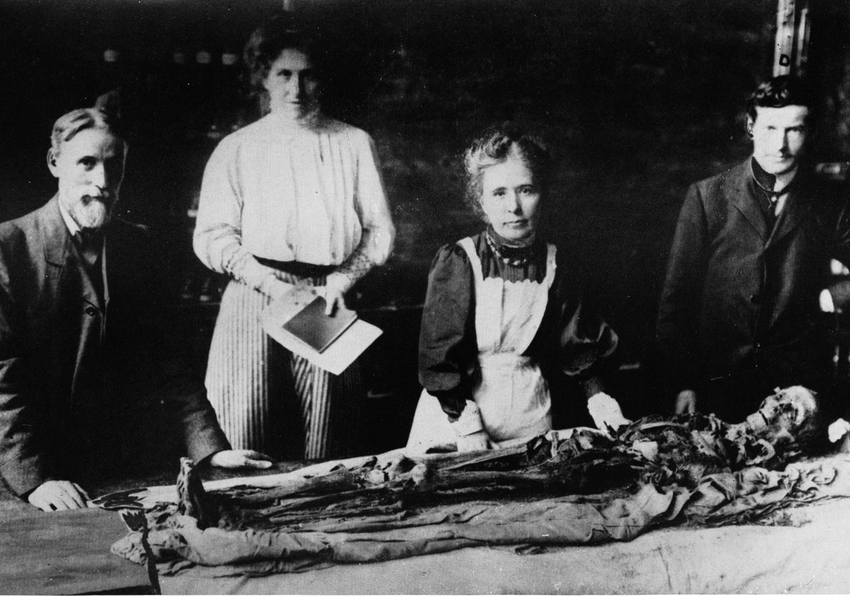
Escape Rating A-: Margaret Murray reads like a combination of Amelia Peabody (Crocodile on the Sandbank) and Harriet Vane (Strong Poison), all the better for Murray having been a real person, who really had the kind of background and went on the kind of adventures that make her a perfect fit for this sort of story.
Seriously, even though as a real person thrust into the role of amateur detective she’s a bit more like Nicola Upson’s version of mystery author Josephine Tey in An Expert in Murder – and their real life time periods do overlap – Murray combines Amelia Peabody’s expertise in Archaeology (and a mutual acquaintance with Flinders Petrie) with Vane’s experience walking the halls of academe at a time when women were just grudgingly accepted. At best.
While the case that Murray discovers herself in the middle of – and is nearly done in by – has just a bit of a hint of the puzzle that Mary Russell digs herself into in A Letter of Mary. (That’s a bit of a hint, BTW)
As much fun as it is to speculate about the relationships between the real historical figures that populate this story and seem to be part of Murray’s inner circle of helpers and investigators, it’s the character of Murray herself that makes this so much fun.
Often, in historical fiction of all stripes, in order to make a female character the active protagonist and give them real agency it is necessary to make them a bit anachronistic, outré, or both. They end up not feeling like creatures of their own time in order for us to identify with them in ours.
Murray’s actual biography lets the reader know that she was a person of her time – and yet that she really was doing it all uphill and against the wind, so to speak. Which allows her to speak both to her time and our own.
The real-life Margaret Murray lived to be 100. After reading Four Thousand Days, I would be thrilled to read 100 years of her adventures as an amateur detective – or pretty much anything else she – or her author – decided to turn their hand to!









